The Race Gap in America’s Police Departments
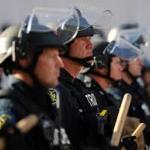
In hundreds of police departments across the country, the percentage of whites on the force is more than 30 percentage points higher than in the communities they serve, according to an analysis of a government survey of police departments. Minorities make up a quarter of police forces, according to the 2007 survey, the most recent comprehensive data available. Experts say that diversity in the police force increases a department’s credibility with its community. “Even if police officers of whatever race enforce the law in relatively the same way, there is a huge image problem with a department that is so out of sync with the racial composition of the local population,” said Ronald Weitzer, a sociologist at George Washington University. Listed below are local police departments from 17 metropolitan areas, sorted so that departments with the largest percentage-point differences of white officers to white residents are at the top.
Baltimore
Baltimore’s police department has a lower percentage of blacks than the population it serves. But in contrast to other cities that have been wracked by tension and protests over police confrontations with black men, the city’s mayor, its police commissioner, the state’s attorney are all black, giving a somewhat different tenor to clashes between the power structure and its critics.

Charleston
African-Americans make up nearly half of residents in North Charleston, but less than 20 percent of its police department. About 80 percent of the department’s officers are white. The racial makeup of the Charleston Police Department more closely resembles the community it serves.

St. Louis
Disparities in the racial makeup of police departments and their communities are most pronounced in smaller Midwestern cities, like Ferguson, where minorities make up at least two-thirds of the population. Ferguson went from majority white to majority black in the last two decades, but the police department is still predominantly white. The imbalance is less pronounced in other parts of St. Louis County, where the population is mostly white.
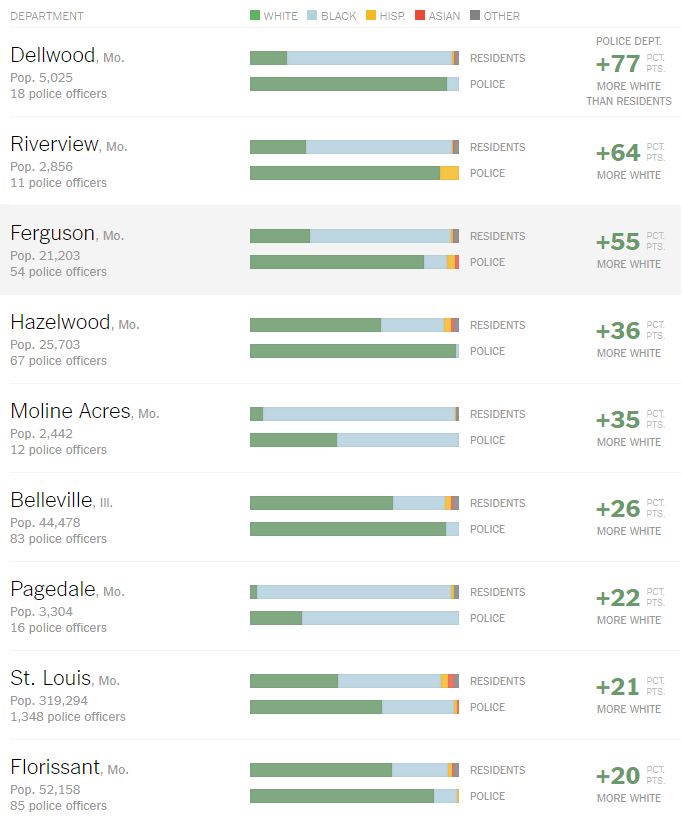
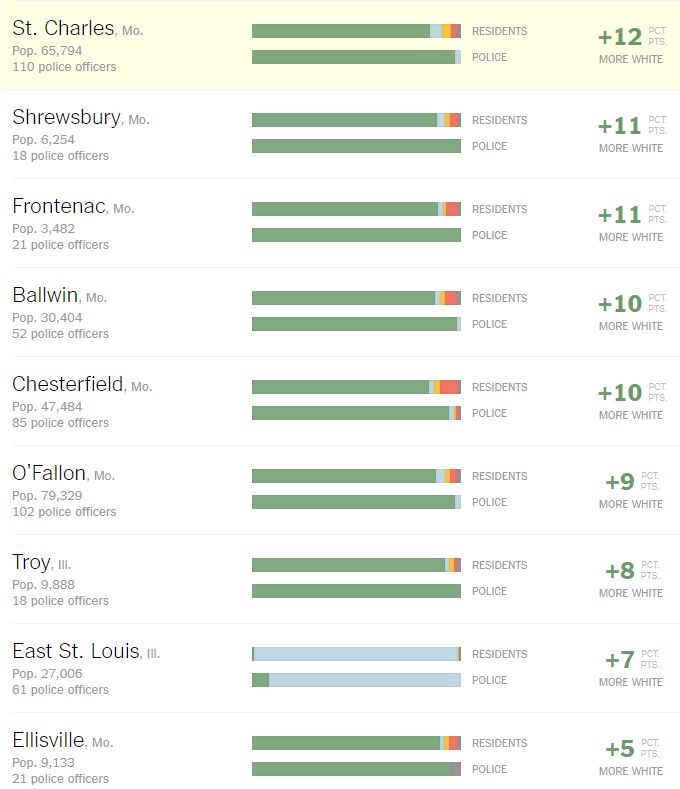
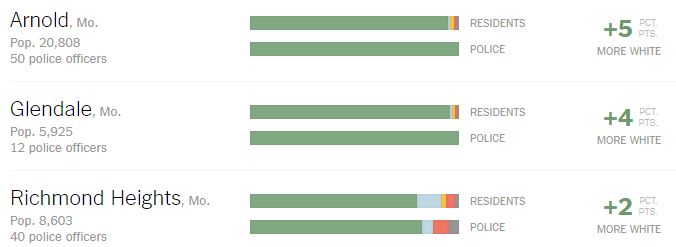
Cleveland
Like Ferguson, Mo., Maple Heights went from being mostly white to nearly two-thirds black in the last few decades. But its police force remains unchanged, despite a 1977 affirmative action deal in which the city agreed to hire more minorities. Most of the other police departments in the Cleveland metro area are more closely matched to the populations they serve.
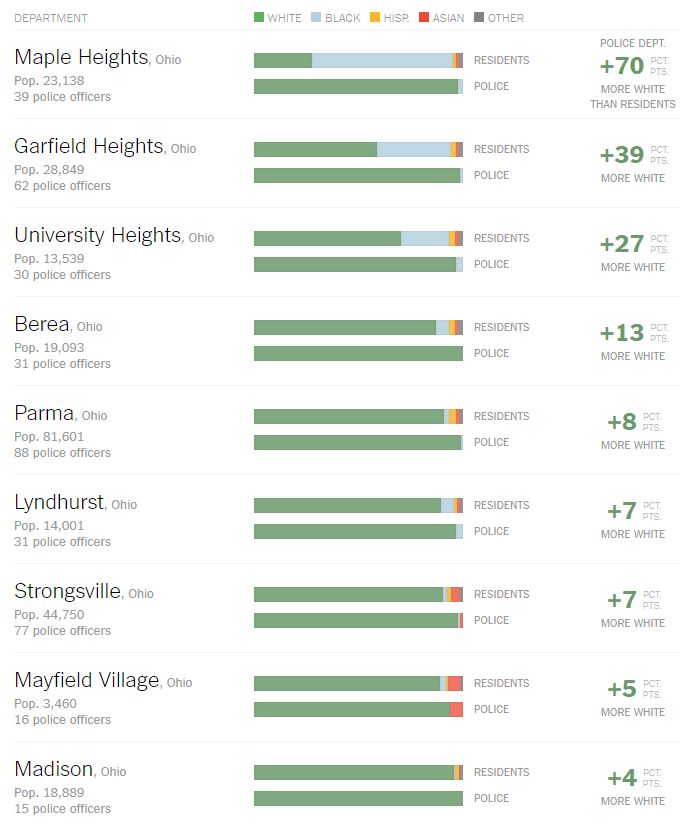
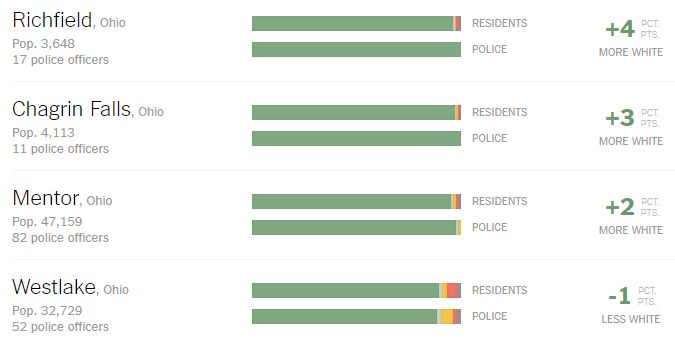
New York
New York City's police department is among a number of large departments where court-ordered mandates have led to more racial diversity. A federal judge ruled in 1978 that the city could not use its Civil Service exam to select new police recruits, leading to measures that increased the hiring of black and Hispanic officers. In some New Jersey towns, like Plainsboro, Dover and Edison, Hispanics and Asians are significantly underrepresented.
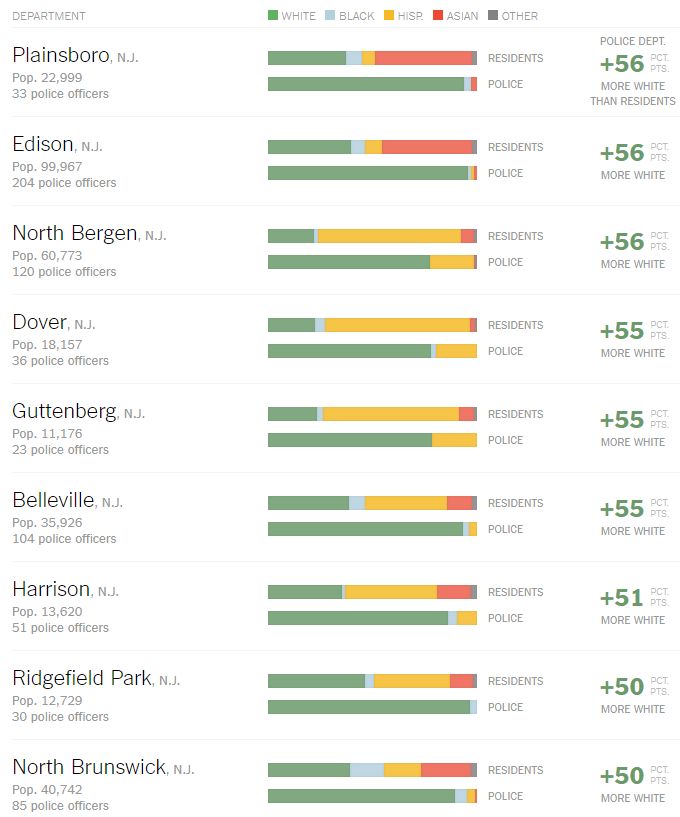
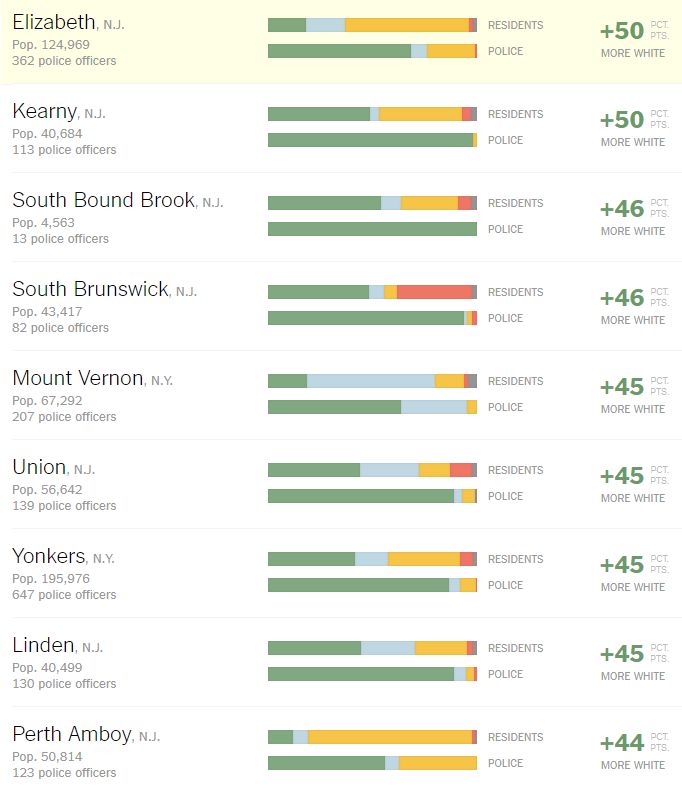
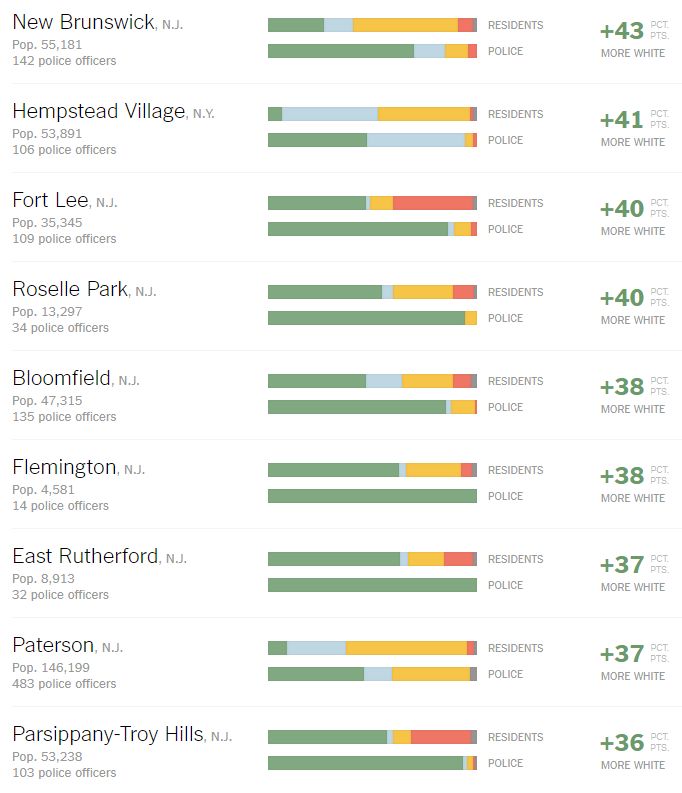
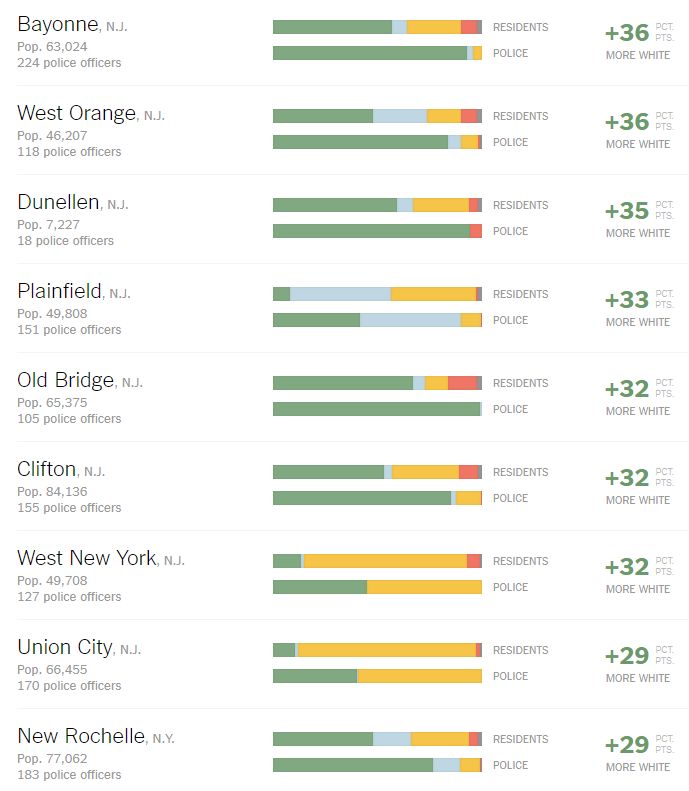

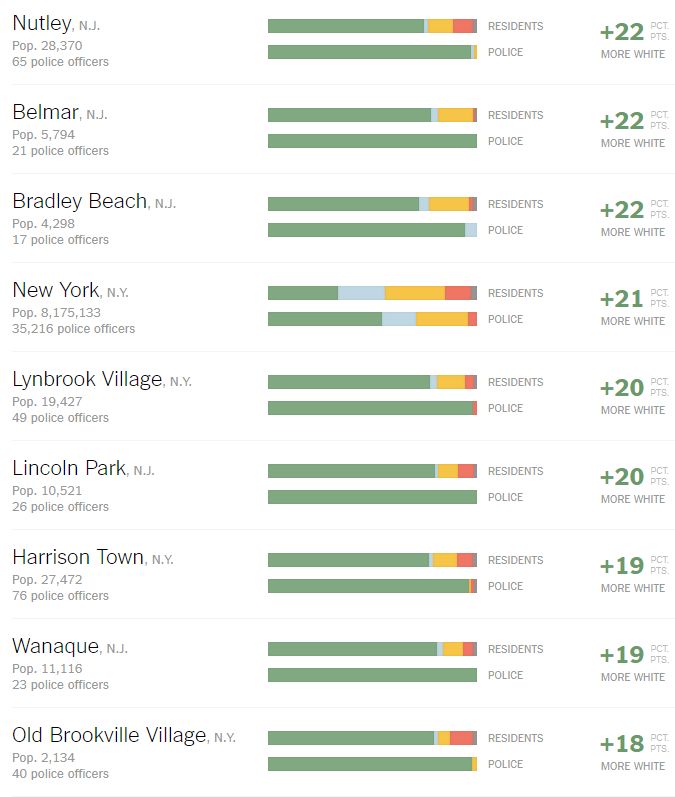
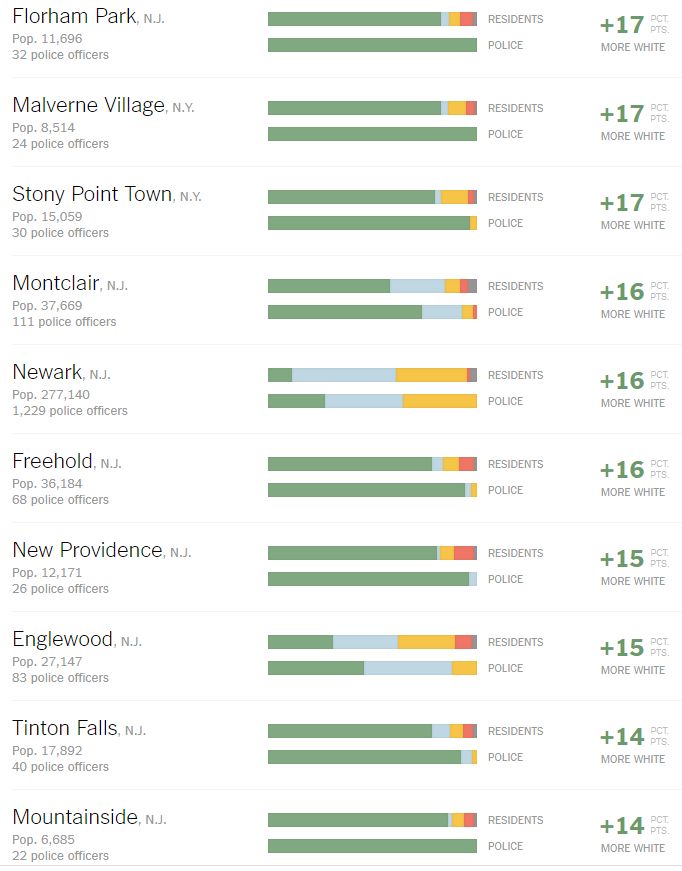
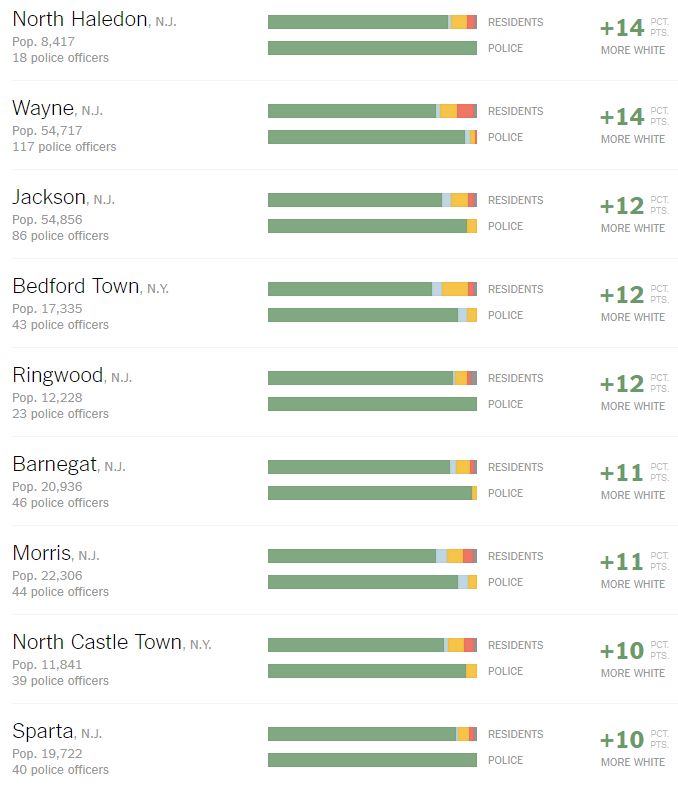
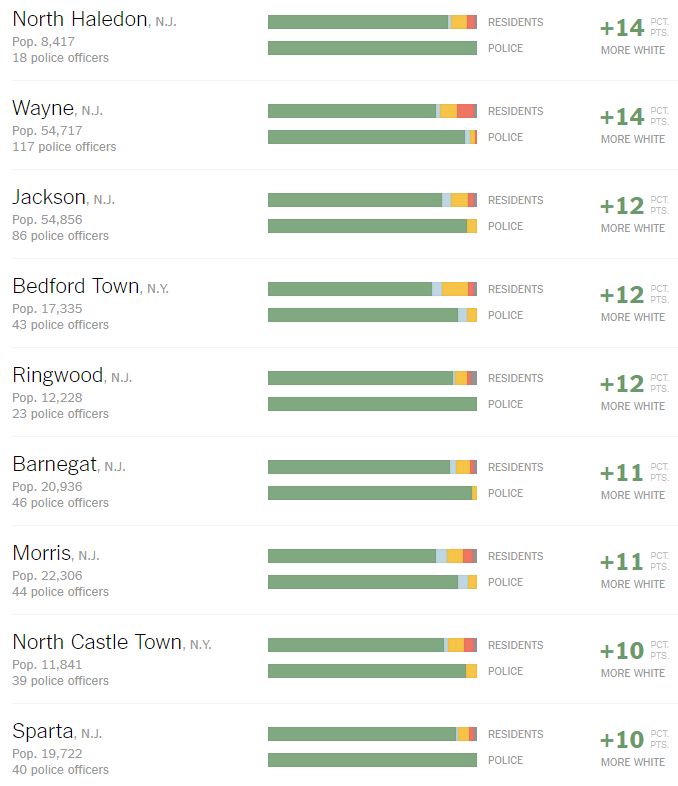
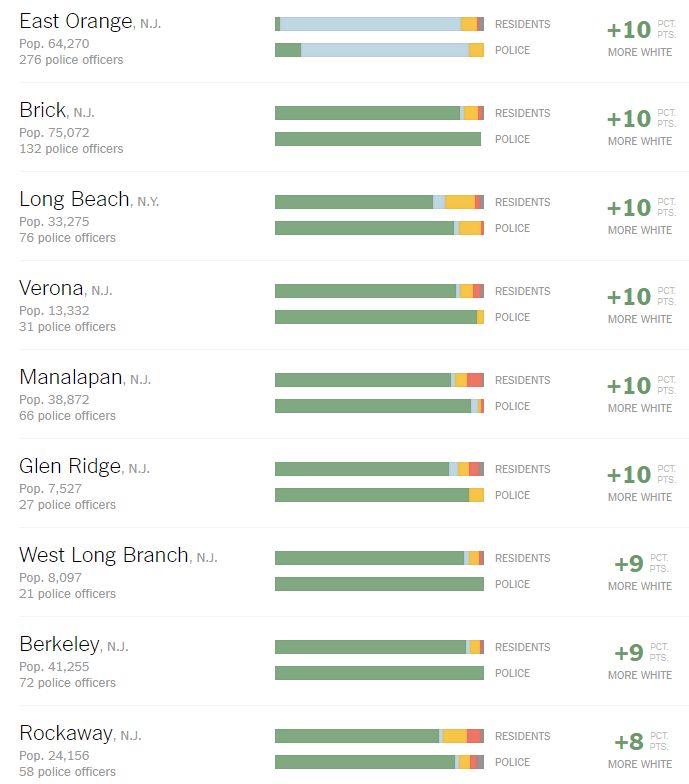
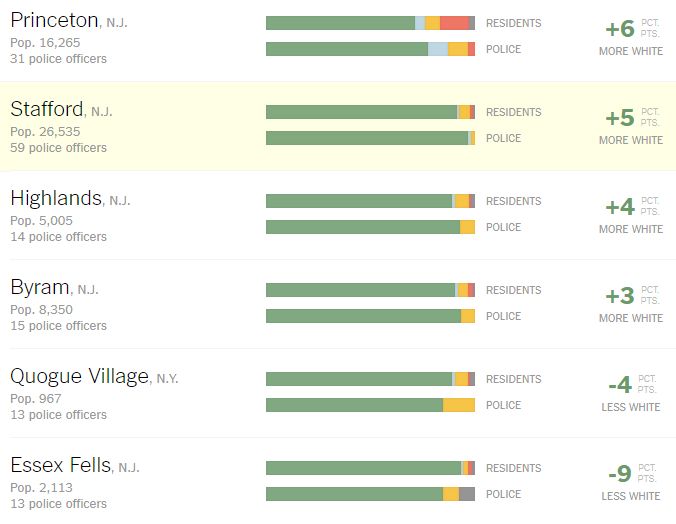
Los Angeles
Cities in Los Angeles County with large Hispanic populations, like West Covina and Pomona, have mostly white police departments. In parts of Orange County, like Buena Park, Tustin and Garden Grove, growing Asian and Hispanic communities are also policed by mostly white departments.

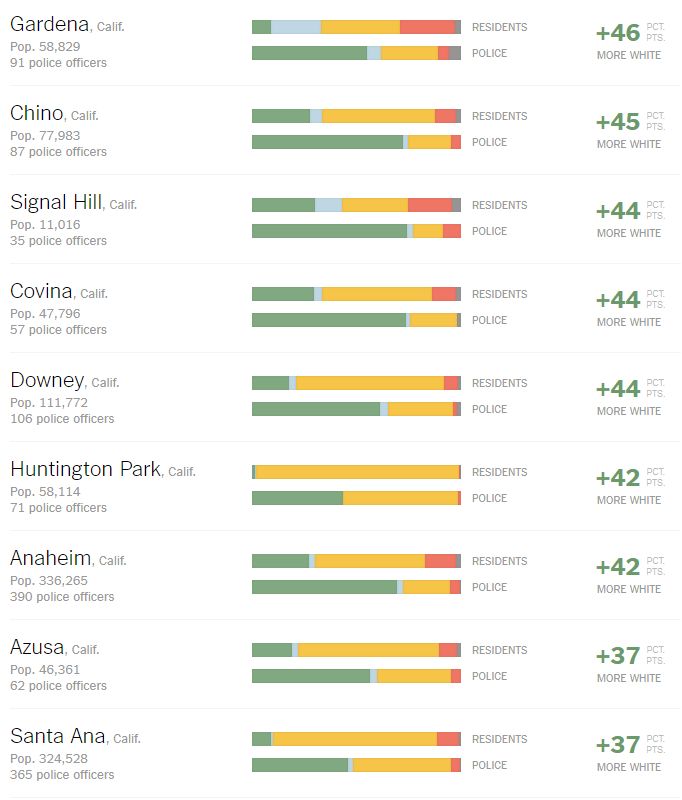
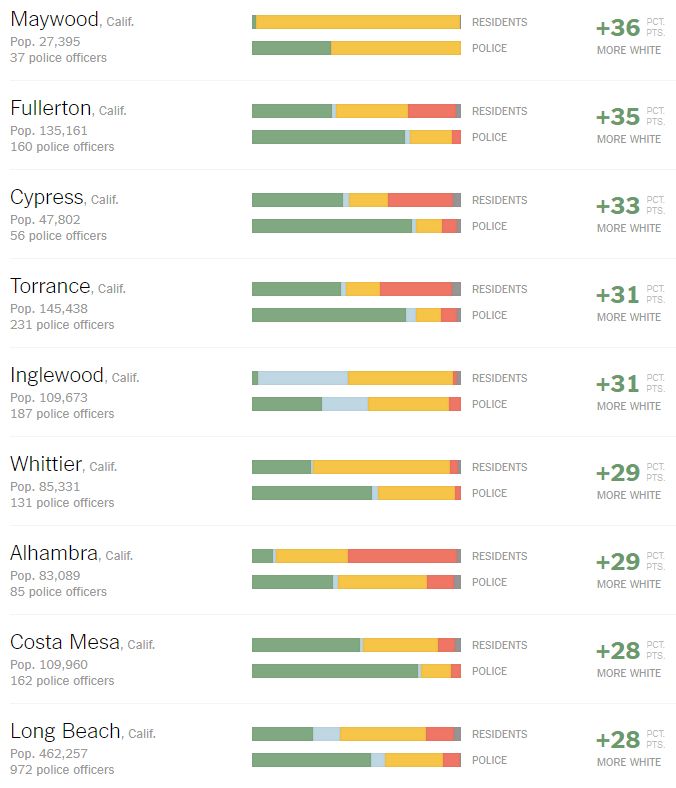


Chicago
The Chicago Police Department faced several lawsuits from 1970 to 2000 that forced it to hire more minorities. But it is still more than half white, despite the city's relatively equal numbers of whites, Hispanics and blacks. Towns that had a huge influx of Hispanics in recent decades, like Cicero, have some of the largest racial disparities.


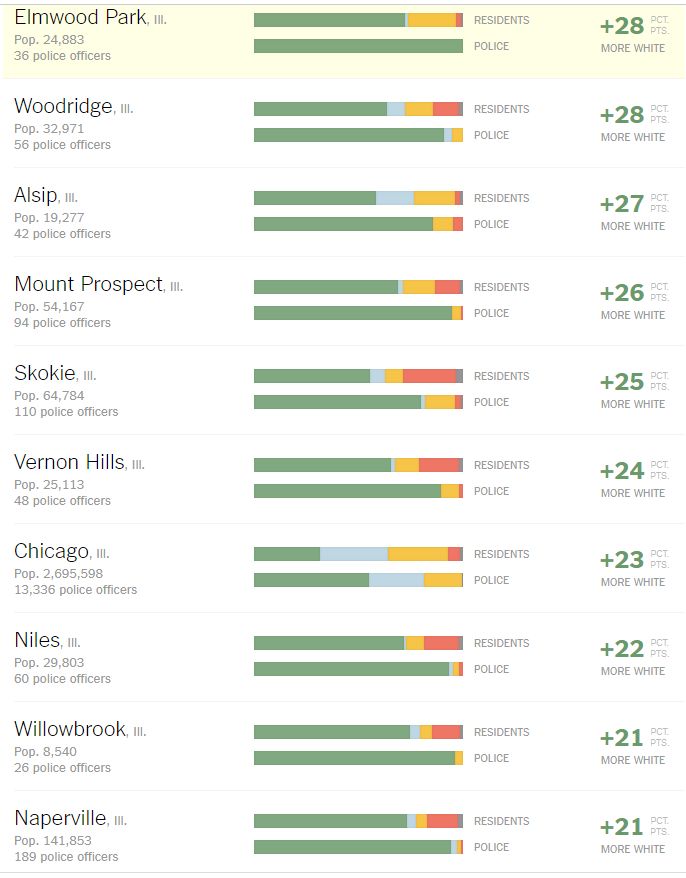
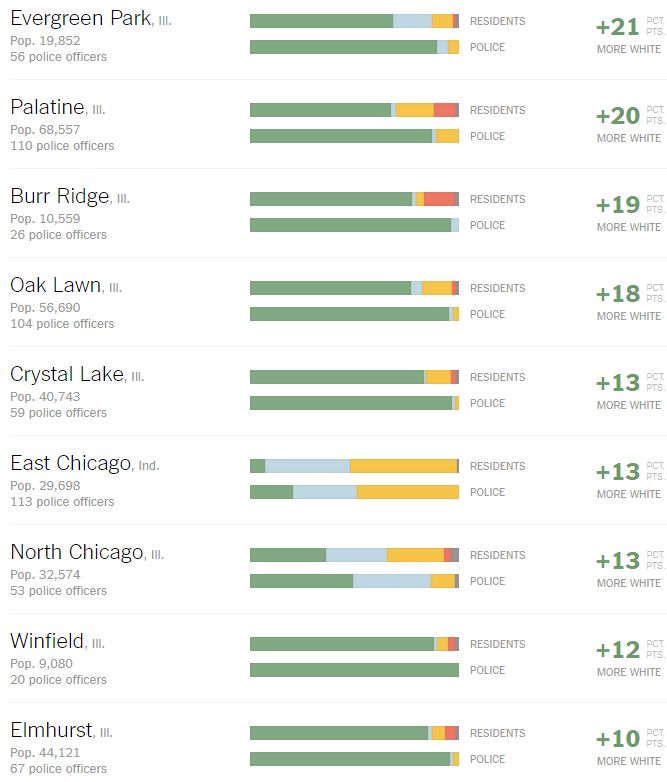
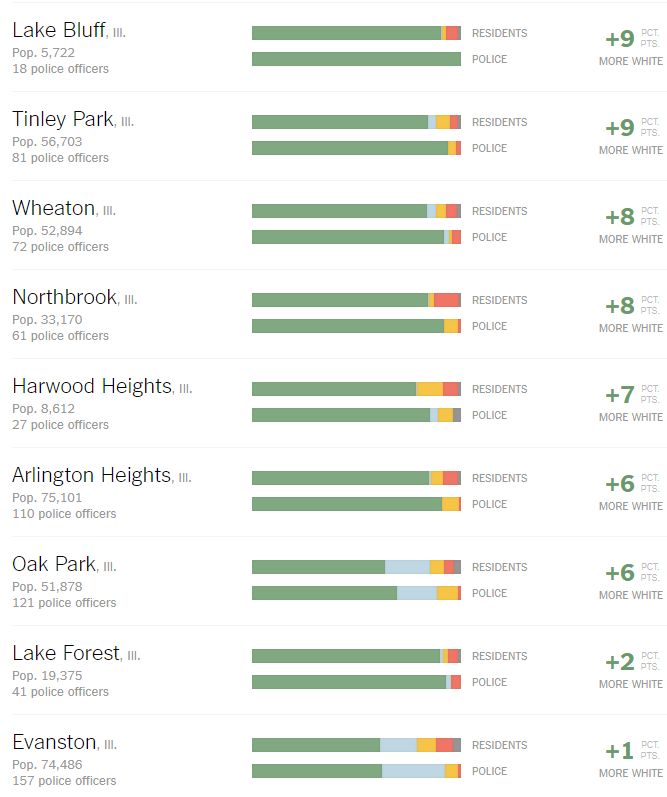

Miami
The racial makeup of police departments in a number of towns, like Coral Gables and Boca Raton, are similar to their communities. But Pembroke Pines, which is about 40 percent Hispanic, is policed by a mostly white department, and Lauderhill, which is three-quarters black, has a department that is more than half white.
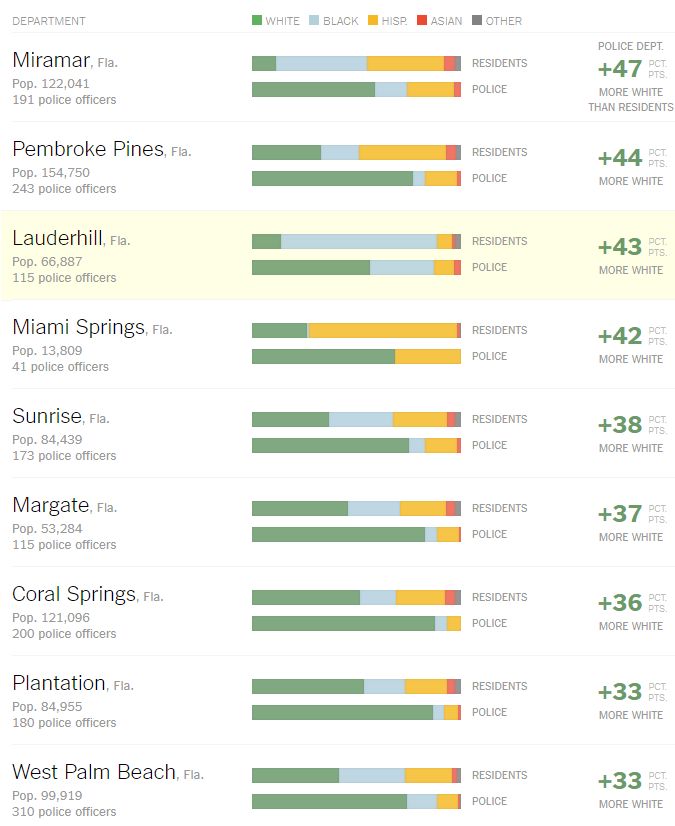
Boston
Chelsea’s police department remains mostly white, even though more than half its population is Hispanic. Progress has been made, though, according to Chief Brian Kyes, who said that minorities now made up 30 percent of the force. Chief Kyes said the department was continuing to reach out to more Hispanics.
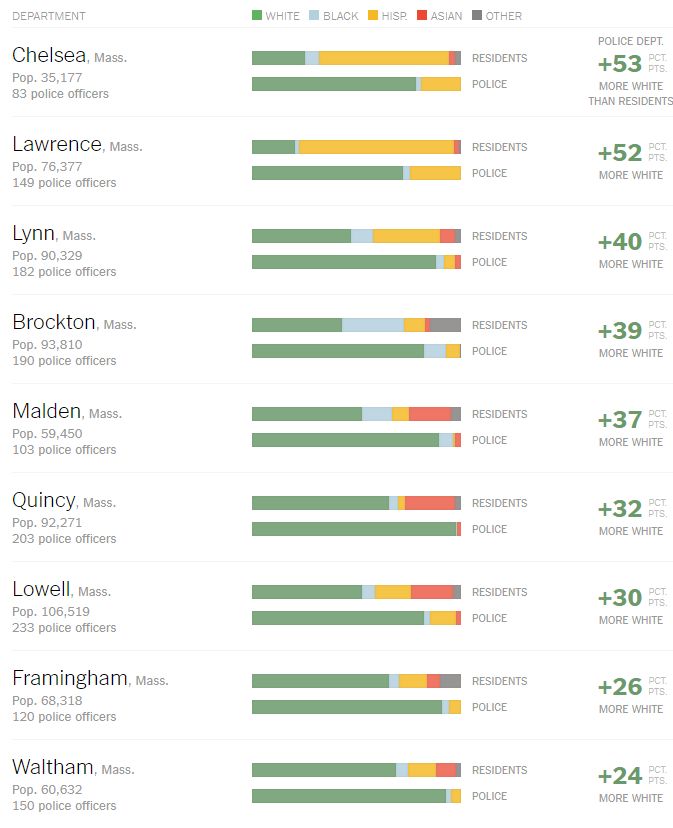
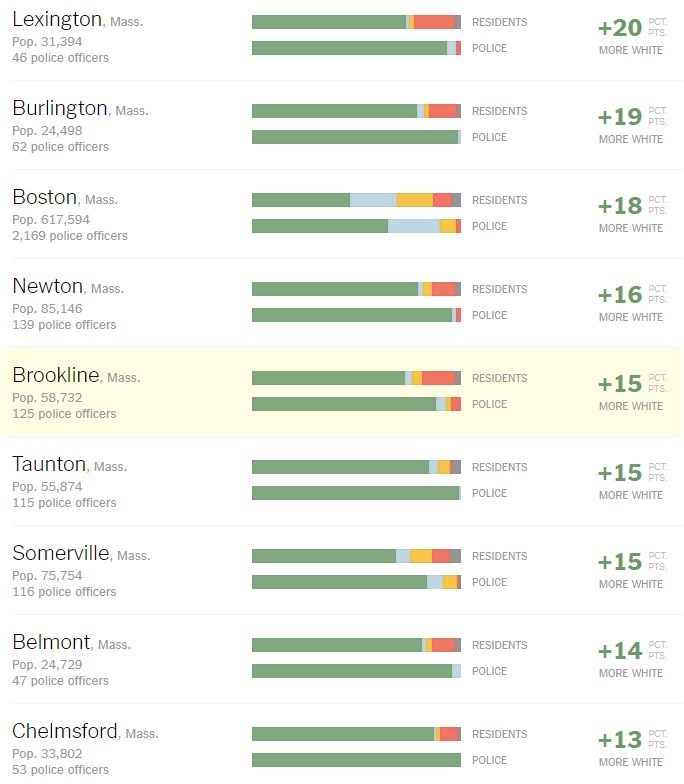
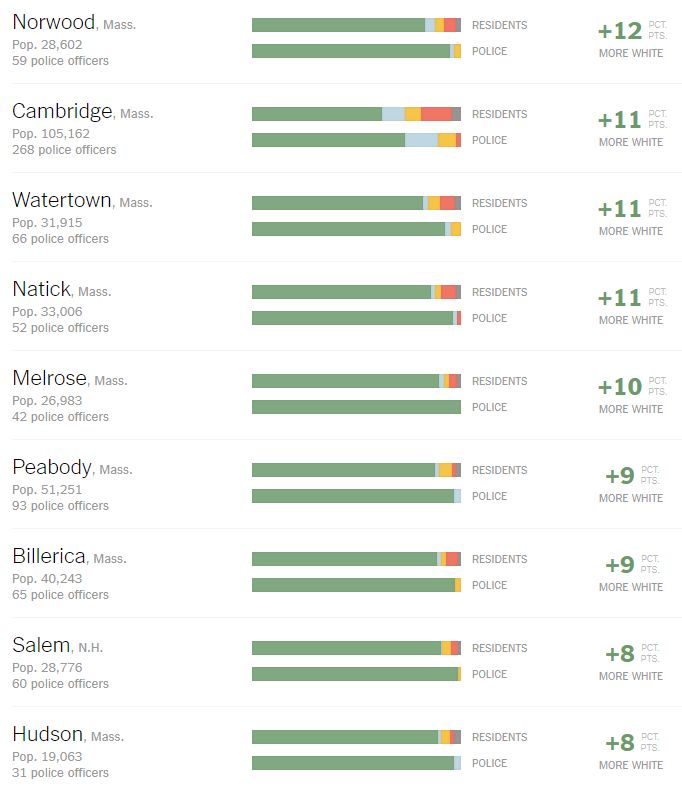
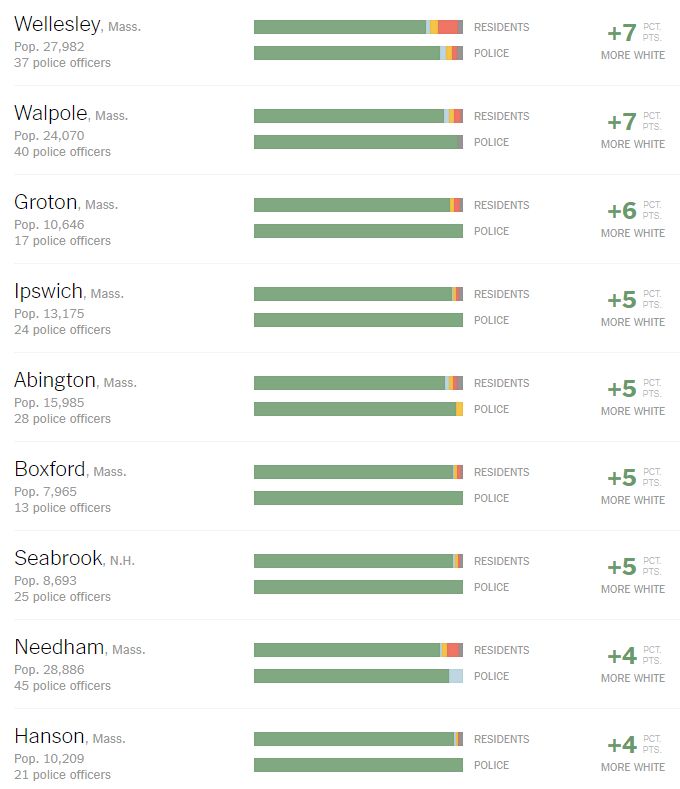

Houston
South Houston, about 12 miles southeast of Houston, is nearly 90 percent Hispanic, but its police force is nearly three-quarters white. Houston’s police department, with a 26-point difference, is closer to matching the demographics of its population.
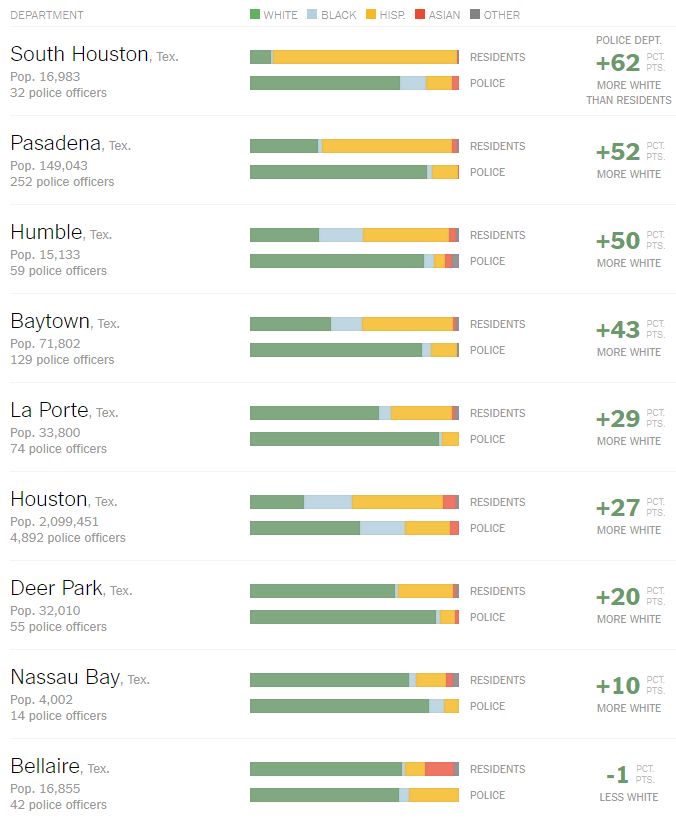
San Francisco
Minorities make up more than half of suburban San Francisco towns like Daly City, Hayward and Fremont, but their police departments are heavily white. The percentage of blacks on Berkeley's police force is higher than the percentage of blacks in the community.
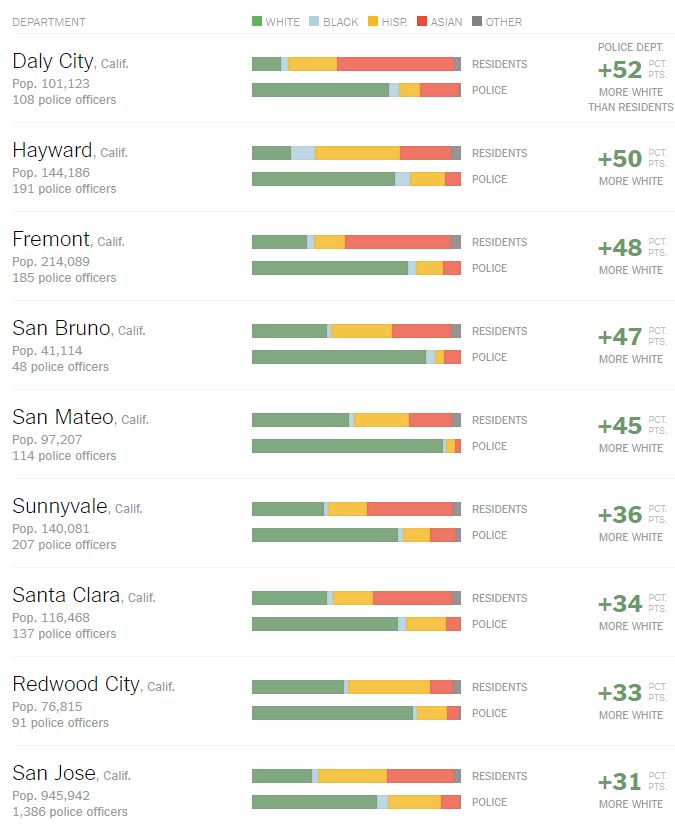

Washington
Washington’s police department has more black officers than white. In the suburban city of Greenbelt, Md., however, the proportion of whites on the police force is 53 points more than in the population it covers. Chief Jim Craze said that the competition for minority employees in the Washington area was “fierce,” and that his best recruiting tool had been minority employees spreading the word informally.
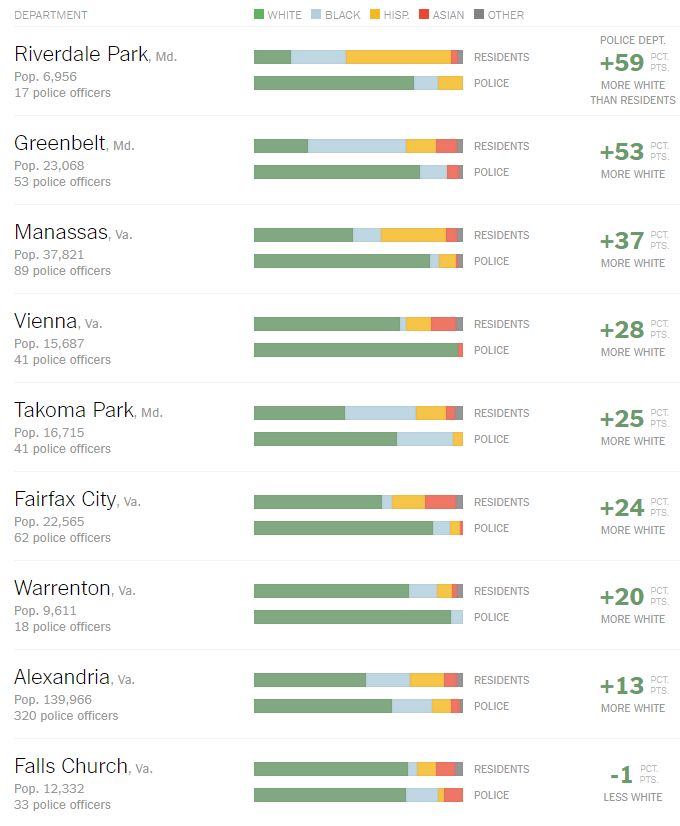
Phoenix
Even in larger cities, some departments, like that of Phoenix, are still heavily white, despite 40 percent of the city being Hispanic.
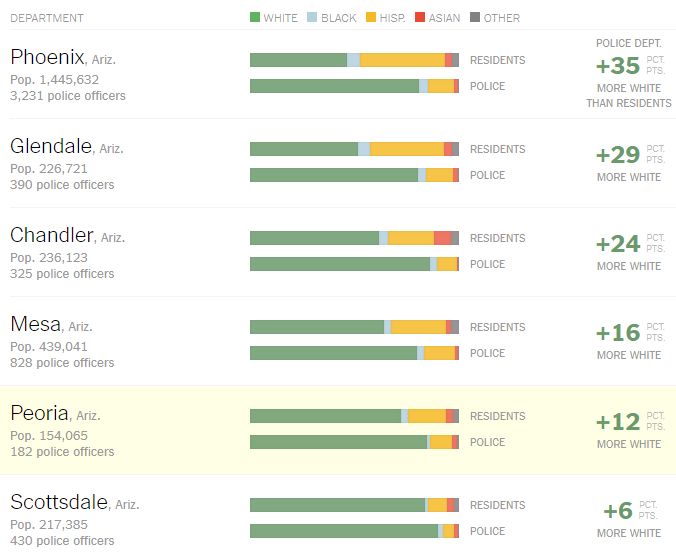
Dallas
Despite having large Hispanic and black populations, Dallas’s police department is more than half white. The imbalance is also prevalent in smaller towns across the metro area.
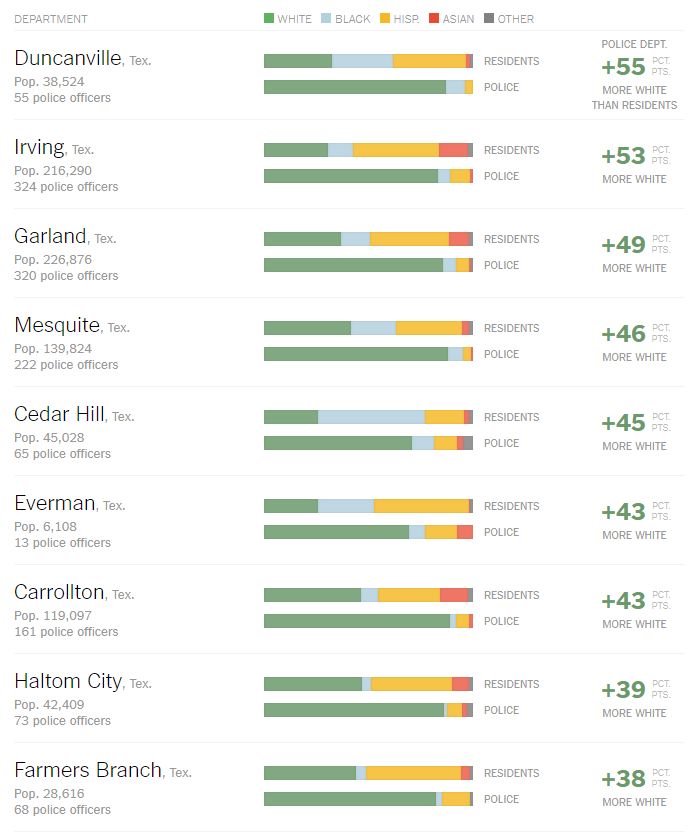


Atlanta
Of the largest police departments in the 2007 survey, Atlanta has one of the smallest racial disparities between its police department and its community.
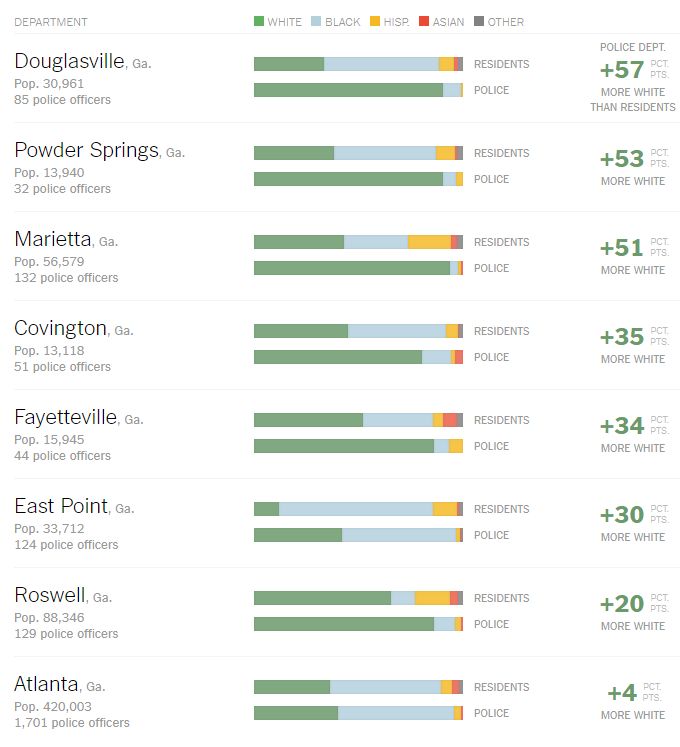
Seattle
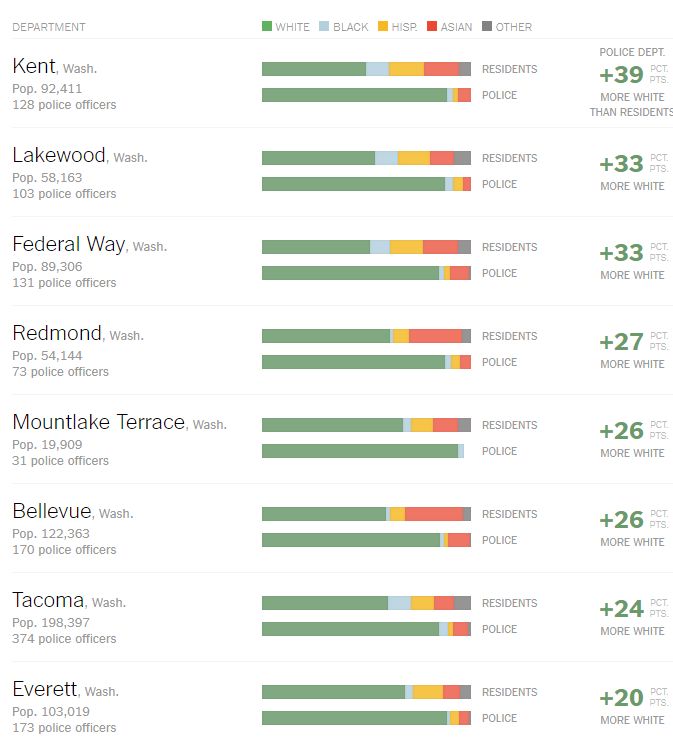
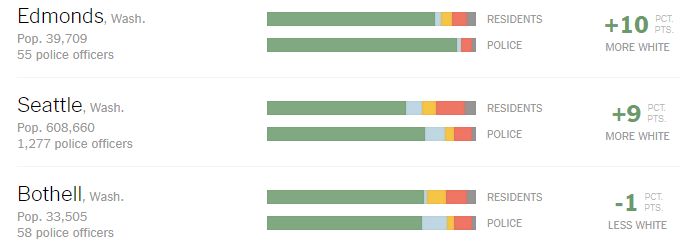
Denver
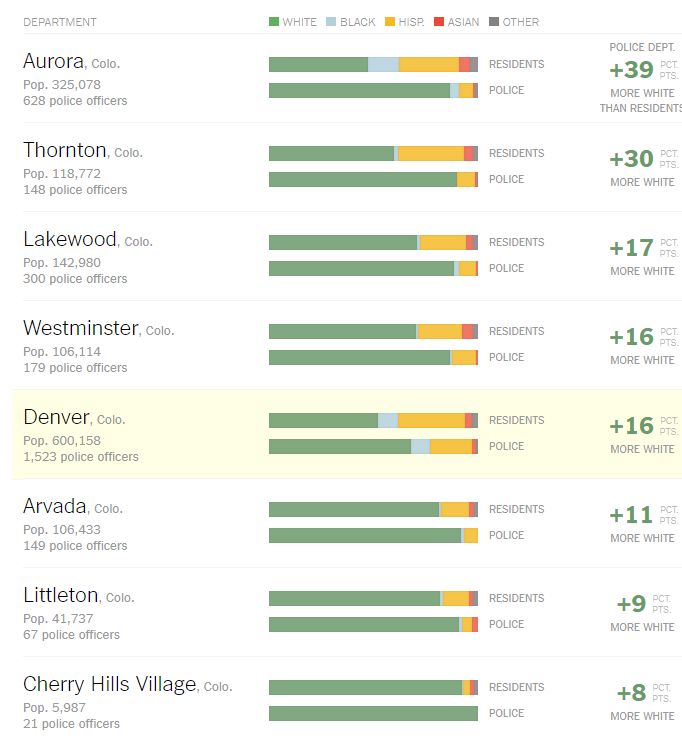
Kansas City
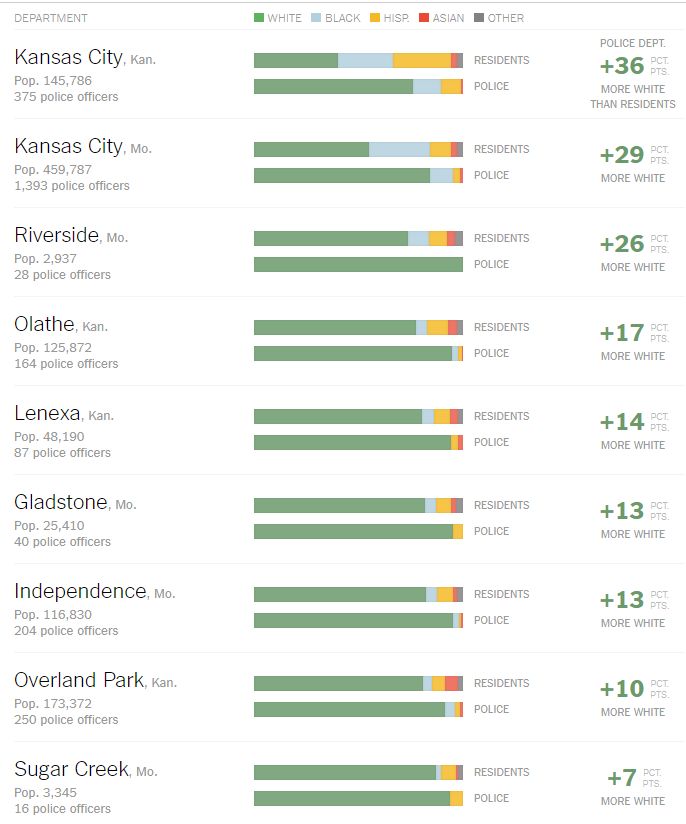
Notes: The Bureau of Justice Statistics surveyed almost all police departments with 100 or more sworn officers and a representative sample of smaller departments. The data above includes municipal police departments. It does not include county or state departments or sheriff’s offices or agencies serving special jurisdictions like schools, airports or parks. Charts showing the proportions of different racial and ethnic groups within the departments are for officers for which data were available. Some departments had a number of officers whose race and ethnicity were unknown. Departments where the percentage whose race or ethnicity was unknown was greater than 10 percent, as well as departments with fewer than 10 officers, were excluded from the lists above. On the maps, circles are placed near the location of the department; some have been offset slightly if they are obscured by circles representing other departments. The New York Times contacted 115 police departments to see how the racial makeup of departments has changed since the 2007 survey. Of the 27 departments that responded, the racial makeup has remained about the same in 20 of them. In six departments, more minorities were hired; in one department, more white officers were hired. The Dellwood, Mo. Police Department was dissolved in 2012. Police services are now provided by the St. Louis County Police Department.
Sources: 2007 Law Enforcement Management and Administrative Statistics, Bureau of Justice Statistics; Brian Reaves, Bureau of Justice Statistics; local police departments; Andrew A. Beveridge, socialexplorer.com; David Alan Sklansky, Stanford Law School; Justin McCrary, University of California, Berkeley, School of Law; Ron Weitzer, George Washington University; Dennis Parker, American Civil Liberties Union
Contributors: Gregor Aisch, Matthew Bloch, Sarah Cohen, Tim Wallace and Jeremy White.
